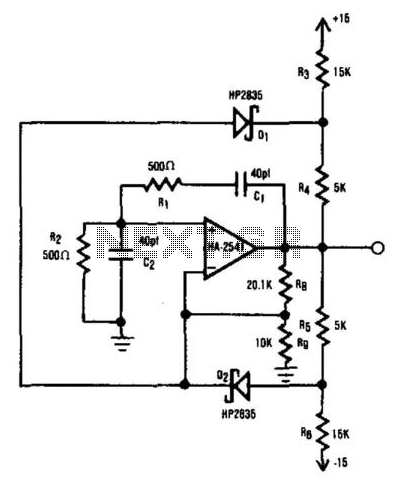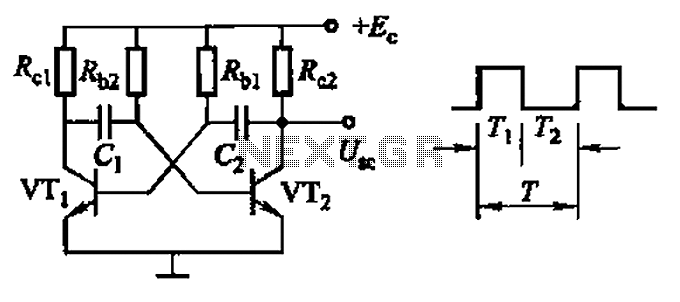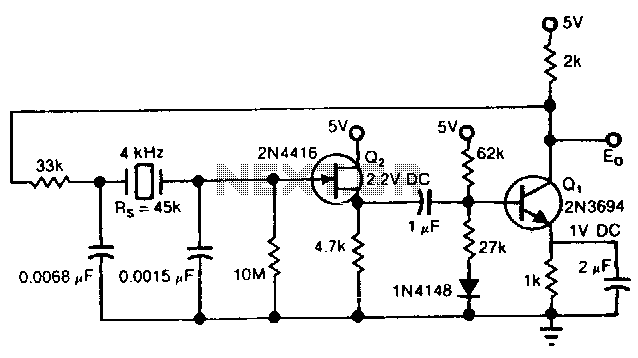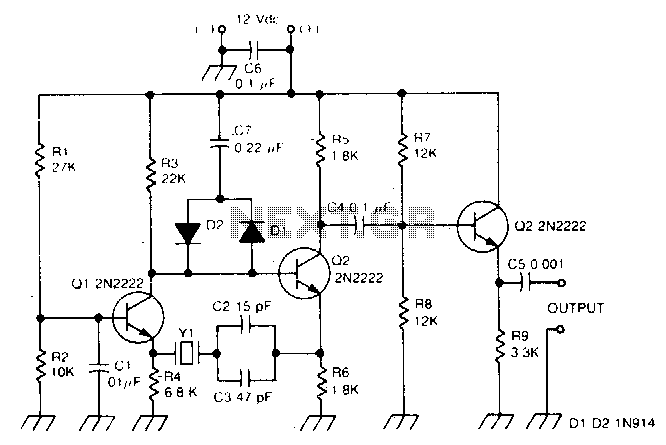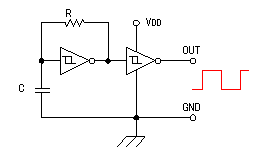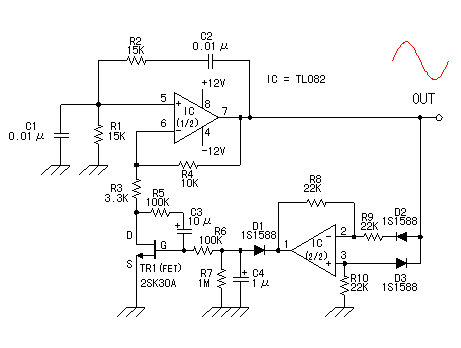
Triangle-square wave oscillator
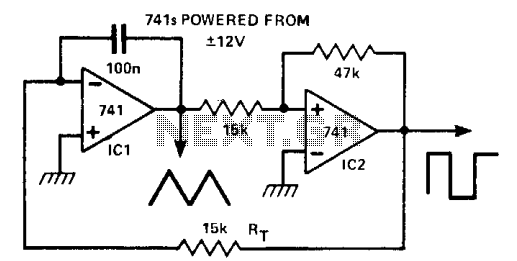
This circuit generates a triangle waveform and a square waveform simultaneously. It is self-starting and does not have latch-up issues. IC1 functions as an integrator with a slew rate determined by the capacitor (CT) and resistor (RT). IC2 acts as a Schmitt trigger. The output of IC1 oscillates between the hysteresis levels set by the Schmitt trigger, which in turn drives the integrator. By adjusting RT, the operating frequency can be varied over a range of 100 to 1.
A total of three resistors, one capacitor, and a dual operational amplifier are required to construct a versatile triangle and square wave oscillator with a frequency range from 0.1 Hz to 100 kHz.
This circuit employs a dual operational amplifier (op-amp) configuration to create a triangle and square wave oscillator. The first op-amp (IC1) is configured as an integrator, where the output voltage ramps up and down based on the charging and discharging of the capacitor (CT). The slew rate of the integrator is influenced by the values of the capacitor and resistor (RT), allowing for precise control over the waveform characteristics.
The second op-amp (IC2) is configured as a Schmitt trigger, which introduces hysteresis to the circuit. This hysteresis ensures that the output of IC1 does not oscillate uncontrollably and provides clean transitions between the high and low states of the square wave output. The Schmitt trigger's thresholds are determined by the feedback network, which stabilizes the operation and prevents latch-up conditions.
The variable resistor (RT) allows for frequency modulation of the output waveforms. By changing the resistance value, the time constants for charging and discharging the capacitor can be altered, thus enabling a frequency adjustment capability ranging from 0.1 Hz to 100 kHz. This feature makes the circuit suitable for various applications requiring different frequency outputs.
In summary, this circuit is a robust solution for generating both triangle and square waveforms with a simple component count, making it ideal for educational purposes, signal generation, and various electronic applications. The combination of a self-starting integrator and a hysteresis-based Schmitt trigger ensures reliable performance across a wide frequency range.This circuit generates simultaneously, a triangle and a square waveform. It is self starting and has no latch up problems. IC1 is an integrator with a slew rate determined by CT and RT and IC2 is a Schmitt trigger. The output of IC1 ramps up and down between the hysteresis levels of the Schmitt, the output of which drives the integrator. By making RT variable, it is possible to alter the operating frequency over a 100 to 1 range. Three resistors, one capacitor, and a dual op amp is all that is needed to make a versatile triangle and square wave oscillator with a possible frequency range of 0.1 Hz to 100 kHz.
A total of three resistors, one capacitor, and a dual operational amplifier are required to construct a versatile triangle and square wave oscillator with a frequency range from 0.1 Hz to 100 kHz.
This circuit employs a dual operational amplifier (op-amp) configuration to create a triangle and square wave oscillator. The first op-amp (IC1) is configured as an integrator, where the output voltage ramps up and down based on the charging and discharging of the capacitor (CT). The slew rate of the integrator is influenced by the values of the capacitor and resistor (RT), allowing for precise control over the waveform characteristics.
The second op-amp (IC2) is configured as a Schmitt trigger, which introduces hysteresis to the circuit. This hysteresis ensures that the output of IC1 does not oscillate uncontrollably and provides clean transitions between the high and low states of the square wave output. The Schmitt trigger's thresholds are determined by the feedback network, which stabilizes the operation and prevents latch-up conditions.
The variable resistor (RT) allows for frequency modulation of the output waveforms. By changing the resistance value, the time constants for charging and discharging the capacitor can be altered, thus enabling a frequency adjustment capability ranging from 0.1 Hz to 100 kHz. This feature makes the circuit suitable for various applications requiring different frequency outputs.
In summary, this circuit is a robust solution for generating both triangle and square waveforms with a simple component count, making it ideal for educational purposes, signal generation, and various electronic applications. The combination of a self-starting integrator and a hysteresis-based Schmitt trigger ensures reliable performance across a wide frequency range.This circuit generates simultaneously, a triangle and a square waveform. It is self starting and has no latch up problems. IC1 is an integrator with a slew rate determined by CT and RT and IC2 is a Schmitt trigger. The output of IC1 ramps up and down between the hysteresis levels of the Schmitt, the output of which drives the integrator. By making RT variable, it is possible to alter the operating frequency over a 100 to 1 range. Three resistors, one capacitor, and a dual op amp is all that is needed to make a versatile triangle and square wave oscillator with a possible frequency range of 0.1 Hz to 100 kHz.
